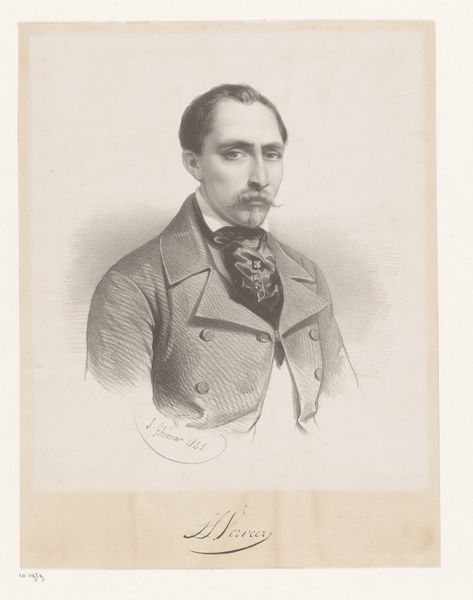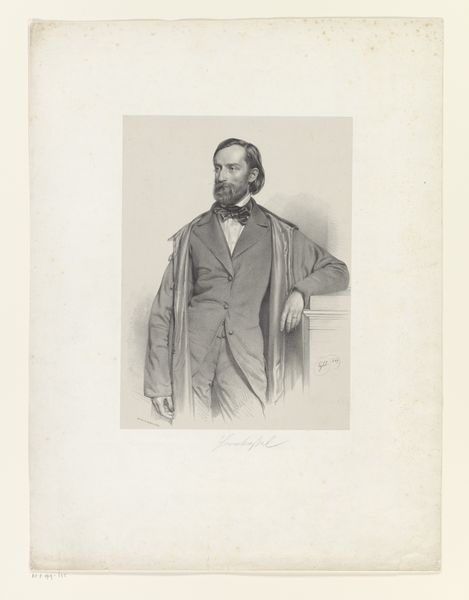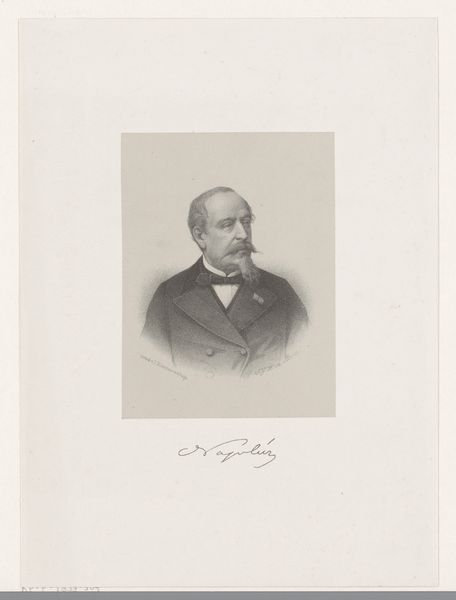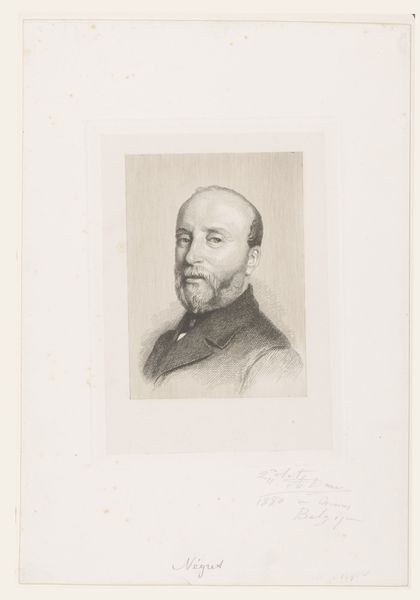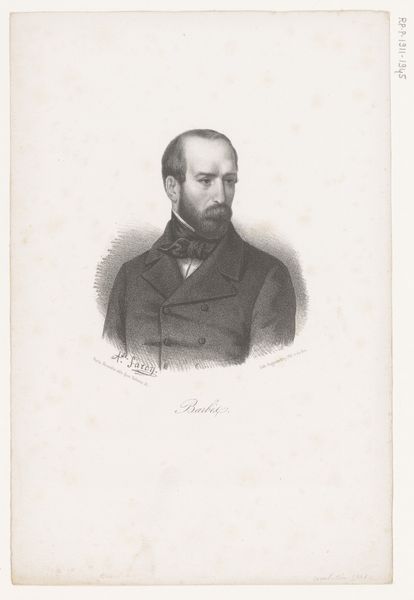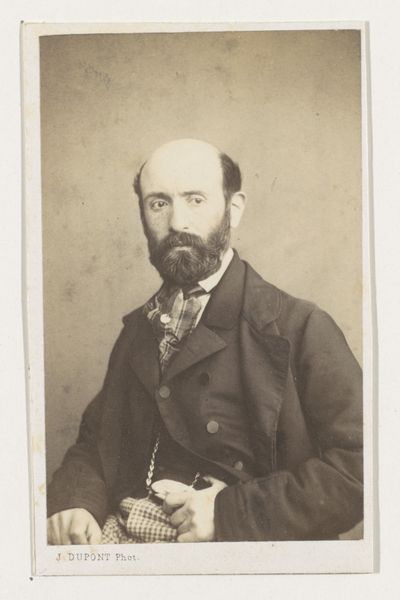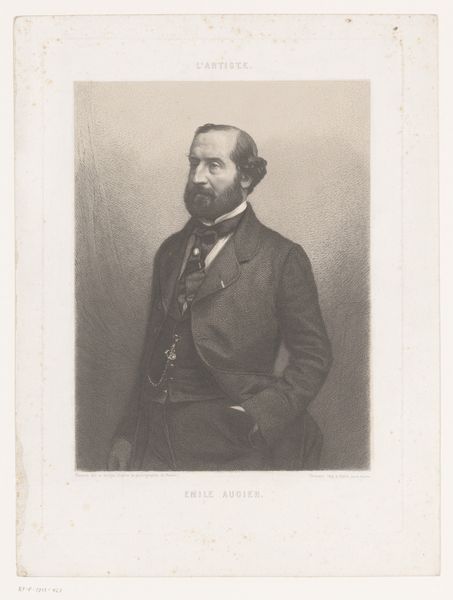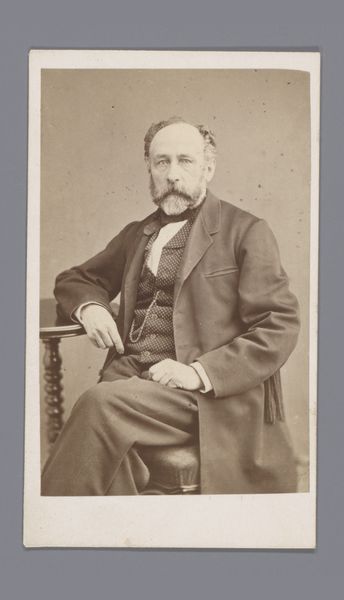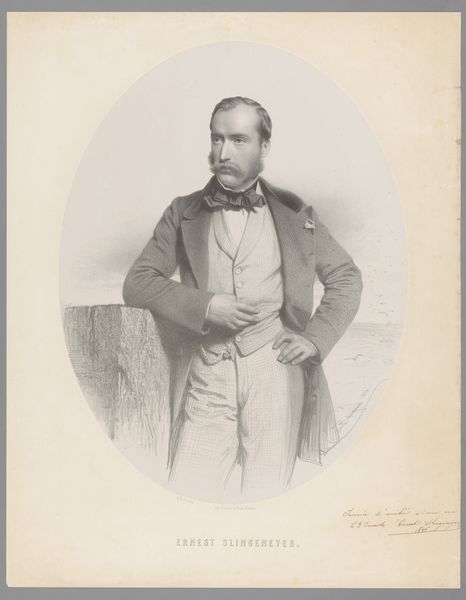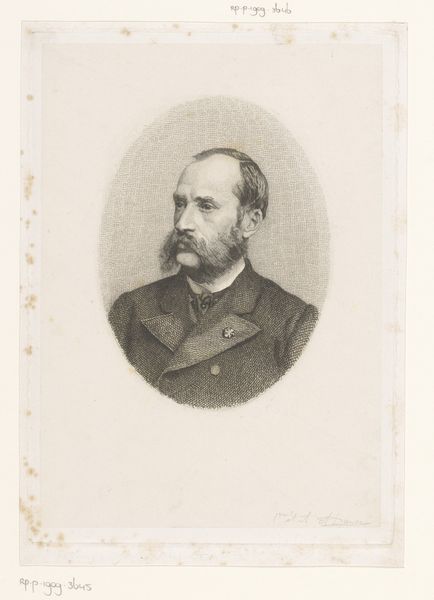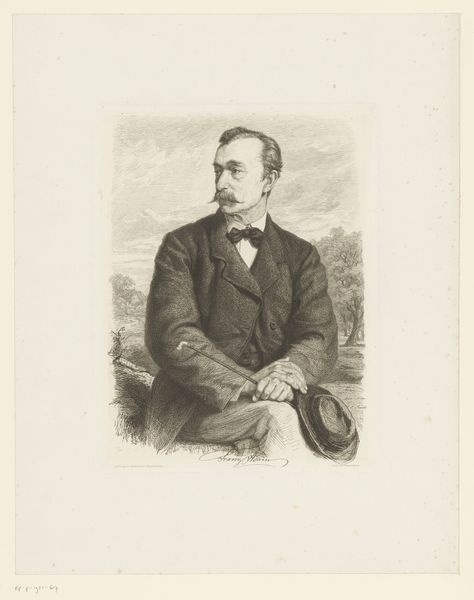
lithograph, print
#
portrait
#
lithograph
# print
#
figuration
#
romanticism
Dimensions: 350 mm (height) x 261 mm (width) (bladmaal)
Editor: We’re looking at “Anton Melbye,” an 1840s lithograph print housed here at the SMK. It depicts Emil Ditlev Bærentzen. The somber tonality creates a sense of gravity. It feels quite formal and structured in its composition. What elements of the print draw your eye, and what's your interpretation of this lithograph? Curator: Indeed. Immediately, one observes the contrast between the meticulous detailing of Bærentzen’s face and clothing and the ethereal, almost dreamlike quality of the background. Notice how the sharp lines defining his features – the spectacles, the mustache – give way to softer, more diffused lines as the eye moves outward. This strategic blurring emphasizes the sitter’s presence, firmly grounding him within the pictorial space. Editor: That contrast is really striking! So, would you say that's intentional, serving a specific artistic purpose? Curator: Undoubtedly. Observe, too, the geometric arrangement: the rectangular easel mirrored in the book he rests his hand upon. These stark shapes act as visual anchors, juxtaposed with the organic flow of his pose. The lithograph subtly plays with this tension between the structured and the unstructured, prompting reflection. What might that represent for you? Editor: Maybe it's a way of balancing realism with something more imaginative? It feels like both a portrait and something beyond that. Curator: Precisely. Ultimately, it invites viewers to delve beyond the surface representation and engage with its formal dynamics. The tonal gradations alone contribute depth that many contemporary portraits lack, revealing form through light itself. Editor: I see. Analyzing the relationship between the elements really deepens my understanding of the work. Thanks for pointing that out! Curator: My pleasure. Remember that understanding formal structure is the initial key to interpreting a work, not merely viewing it.
Comments
No comments
Be the first to comment and join the conversation on the ultimate creative platform.


